- Home
- About Us
- Contact Us
- Site Map
- Affiliate Disclosure
- Privacy Policy
- Terms And Conditions
- Best Drone For Beginners 2021 : Top Beginner Drones
- Best Drones 2022 For Beginners : Top Beginner Drone
- Best Drones For Under 100 Dollars That Are Top Easy To Fly
- Best Cheap Drone For Photography : Camera Drones Budget
- What Is The Best Drone For 2022 And How Fast They Go
- Best Drone In The World To Use For Your First Time
- Best Drones 2022 With Camera : Which One Is The Best Drone
- Mavic Drone : The Most Marvelous Epic Controlled Flight System
- Drone Pilot License : The Best Way To Show Off Your Flight Skill
- Sky Rider Drone: Wi-fi Quadcopter With Foldable Black Camera
- Drone For Kids : The Best Toy To Focus On STEM Technology
- Propel Drone HD Camera Quadcopter And Star Wars
- Mini Drone With Camera : What Is The Best One And Why It Is Good
- Drones Dji : The Most Popular Consumer Drone On The Market Today
- Long Range Drone : How Far Can It Go And At What Rate Of Speed
- Micro Drone : The Smallest Toy With The Biggest Flight Fun
- Flying Spinner Mini Drone : The Best Flying Machine For Home Use
- Drones That Follow You : Is This An Invasion of Privacy or Not ?
- Drone Vivitar : A Magnificent Piece Of Equipment To Learn To Fly
- Drone Repair Near Me : Where Can I Find Reliable Parts And Stuff
- Drone Photography Near Me That Can Capture The Scenic View
- Drone Quadcopter : The Best Aerial Fly Machine That You Can Own
- Drone Light Show : A Spectacular Array Of Lights, Camera, Action
- Drone Holy Stone : The Most Quality Flying Device Anyone Can Use
- Sky Quad Drone Reviews Is It A Scam Or Legit Revealed
- Drone Fishing : When A Man Has A Rod, Boat, And Nothing But Time
- Faa Drone Registration : Feel Free To Fly But Follow The Rules
- Remote Control Drone : RC Drones With Fpv Controllers
- Hand Controlled Drone : Guiding Your Flight At Your Finger Tips
- Best Video Drones For Beginners | Features A Beginner Drone
- The Best Drone To Buy : Drones 2023 For Beginners
- Dgi Drone
- Best Drone For Night Photography
- Best Drone For The Money
- Best Drone For Teenager
- Best Drone For Under 200
- Best Drone For Under 500
- Best Drone For Video
- Best Drone In The Market
- Best Drone Under 1000
- Best Drones For Travel
- Bird Drone
- Black Hornet Drone
- Deerc Drone
- DJI Drones For Sale
- Best Beginner Drone With Camera : Are You New To Flying
- Best Beginner Drone For Me And How Much Will It Cost
- Battery For A Drone : Benefits, Advantages, And Features
- Best Camera Drone For Professional And Entertainment Purposes
- Best Cheap Drone In The Market That Will Not Cost An Arm and Leg
- Dji Fpv Drone
- Dji Mavic 3 Drone
- Drone Dj
- Best Drone Camera For First Time Users And Experienced Users
- What Are The Best Drones For Video Drone Camera
Potensic ATOM 3-Axis Gimbal 4K GPS Drone, Under 249g, 96 Mins Flight, Max 6KM Transmission
Mini 2 Drone :A Beginner's Guide To Something Fun
The micro is a compact drone manufactured by DJI, a leading brand in the consumer drone market. It is the successor to the popular Mavic Mini drone and offers several improvements in terms of features and performance. Here are some details about the DJI micro drone:

Design: The micro follows a similar design philosophy as its predecessor, featuring a foldable design that makes it highly portable. It is lightweight and compact, weighing only 249 grams, which is significant because it falls below the 250-gram threshold that requires registration in many countries.
Camera: One of the notable upgrades in the micro is its camera. It is equipped with a 12-megapixel 1/2.3-inch CMOS sensor capable of capturing photos with a resolution of up to 4000x3000 pixels. The camera supports 4K video recording at 30 frames per second (fps) and can also shoot in 2.7K at 30 fps or 1080p at 60 fps. It has a 3-axis motorized gimbal that provides stability and smooth footage.
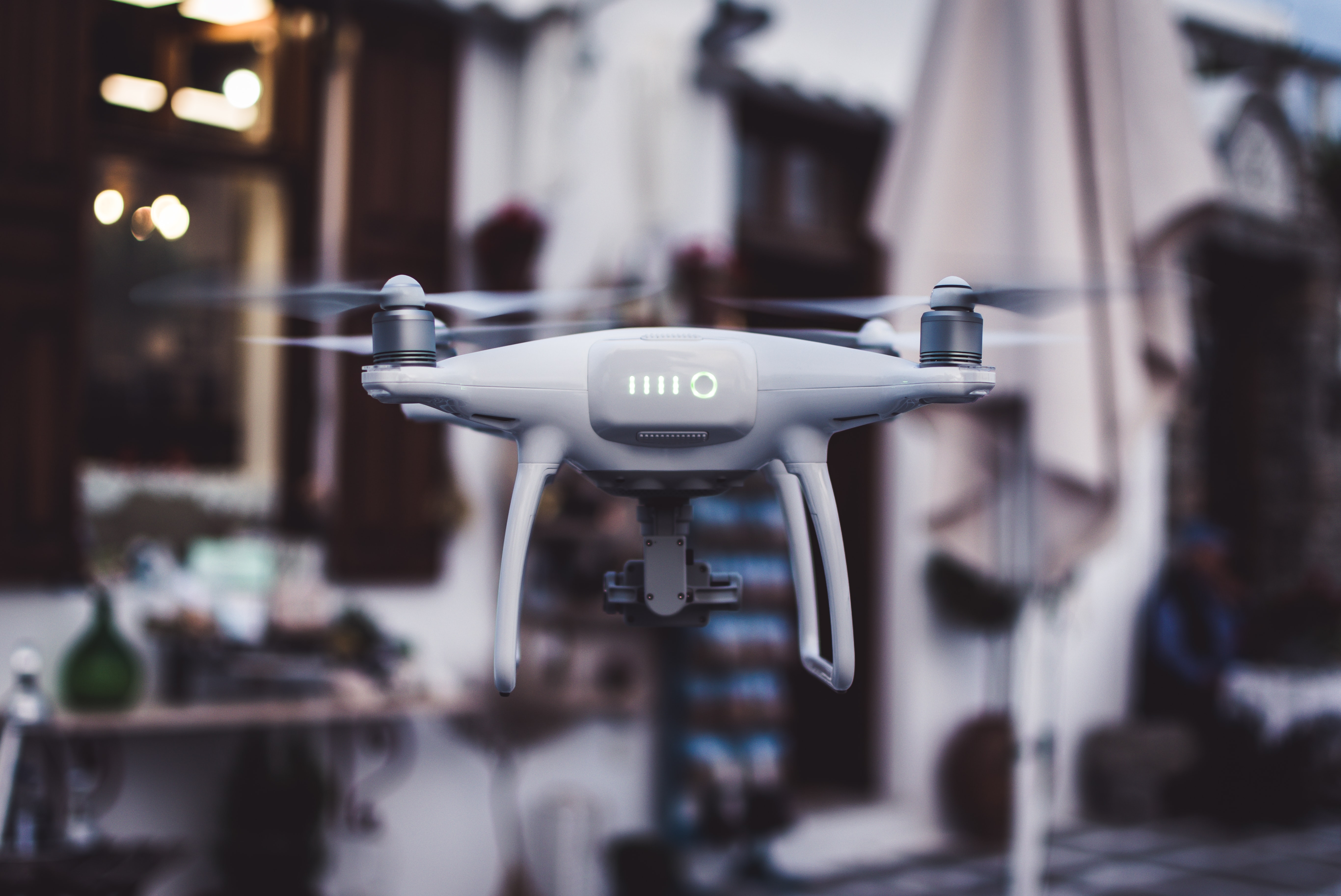
Flight Performance: The micro offers enhanced flight performance compared to its predecessor. It has a maximum flight speed of 16 meters per second (m/s) in Sport mode and a maximum ascent speed of 5 m/s. The drone's maximum transmission distance is up to 10 kilometers (in open, unobstructed environments), thanks to the OcuSync 2.0 transmission technology, which provides a reliable and stable connection between the drone and the remote controller.
Intelligent Flight Modes: The DJI micro incorporates several intelligent flight modes to assist pilots and enhance the overall flying experience. Some of the notable modes include QuickShots (pre-programmed cinematic flight paths), Dronie, Circle, Helix, Rocket, and Boomerang. It also features a GPS-based Return-to-Home (RTH) function that automatically brings the drone back to its takeoff point if the connection is lost or the battery is running low.

Remote Controller: The micro comes with a compact and ergonomic remote controller that provides precise control over the drone. It features a foldable design, making it easy to transport. The remote controller uses DJI's OcuSync 2.0 transmission technology, which offers a reliable connection and a live video feed from the drone's camera. It has a built-in smartphone holder, allowing you to attach your phone and use it as a display to access the drone's features and view the live video feed.
Flight Safety: DJI has implemented various safety features in the micro to ensure a secure flying experience. It has downward-facing sensors that enable precise hovering and stable flight, even in environments without GPS. The drone also has an automatic "Return-to-Home" feature that activates if the battery is critically low or if the connection is lost with the remote controller.

Battery Life: The micro is powered by a removable and rechargeable intelligent flight battery. It provides a maximum flight time of up to 31 minutes, depending on environmental conditions and flight maneuvers. DJI offers additional batteries for extended flight sessions.
Overall, the DJI micro is a feature-packed drone that combines portability, ease of use, and impressive image quality. It is suitable for both beginners and experienced drone enthusiasts looking for a compact and capable drone for aerial photography and videography.
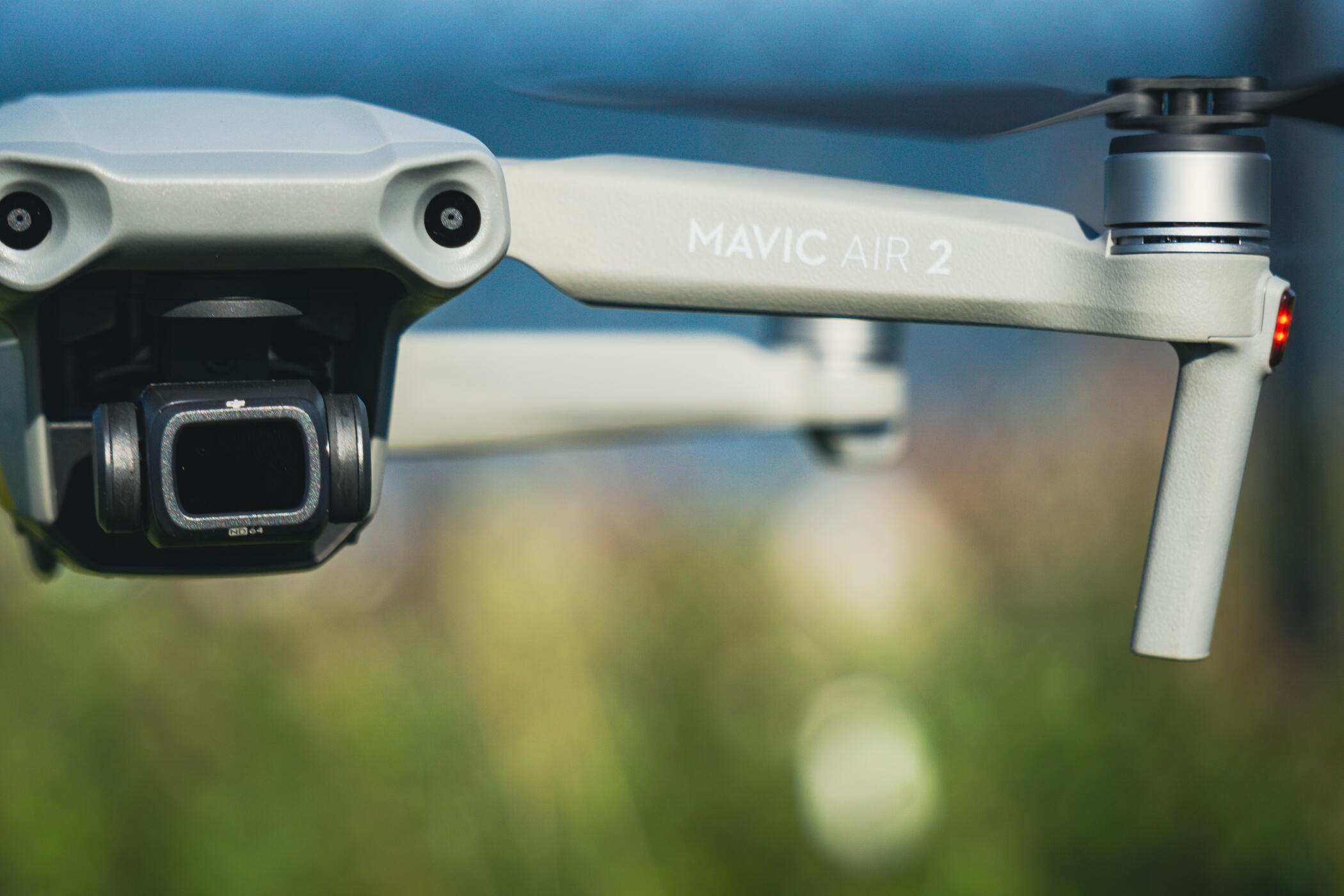
Mini 2 Drone Is The Micro Drone Worth It ?
The DJI micro drone is definitely worth considering for several reasons. Here are some detailed factors to consider when evaluating its worth:
1. Image and Video Quality: Despite its compact size, the micro offers impressive image and video quality. The 12-megapixel camera with a 3-axis gimbal provides stability and smooth footage, allowing you to capture stunning aerial photos and videos. It supports 4K video recording at 30 fps, which is a significant improvement over its predecessor, the Mavic Mini.
2. Portability and Weight: Micro drone ? The micro weighs only 249 grams, making it one of the lightest and most portable drones on the market. Its compact and foldable design allows you to easily carry it in a small bag or even a pocket. The lightweight nature of the drone also has the advantage of falling below the 250-gram threshold in many countries, which exempts it from certain regulations and registration requirements.
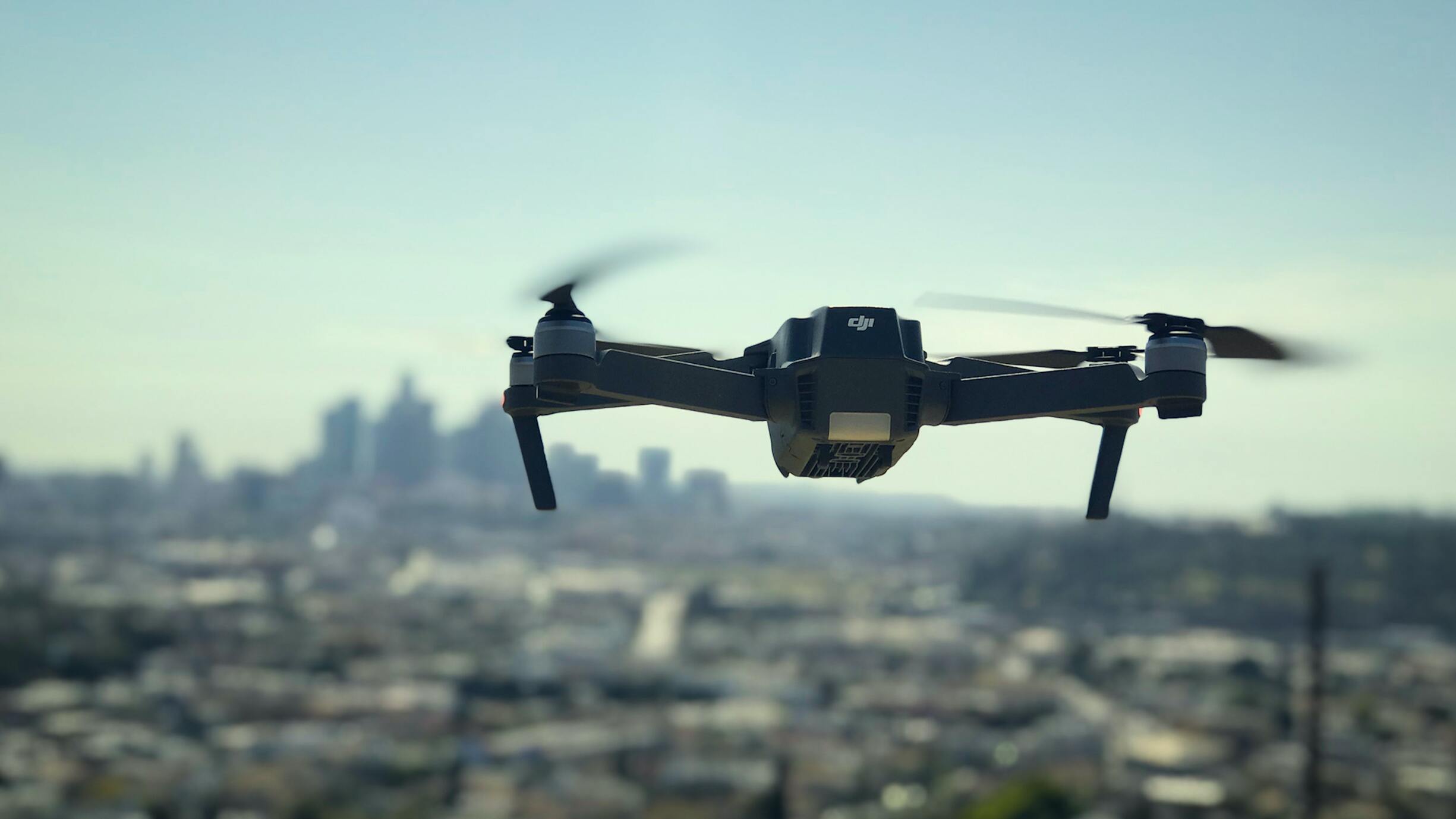
3. Flight Performance: micro drone ? The micro offers improved flight performance compared to the Mavic Mini. It has a maximum flight speed of 16 m/s and can ascend at a rate of 5 m/s. The drone's flight range is up to 10 kilometers, thanks to the OcuSync 2.0 transmission technology. These features provide a more dynamic flying experience and allow you to explore a wider range of environments.
4. Intelligent Flight Modes: micro drone ? The micro incorporates various intelligent flight modes that enhance the overall flying experience. QuickShots, such as Dronie, Circle, Helix, Rocket, and Boomerang, enable you to capture cinematic shots effortlessly. micro drone ? These automated flight paths are ideal for beginners and those who want to create professional-looking shots without extensive piloting skills.

5. Flight Safety Features: DJI has integrated several safety features into the micro to ensure a secure and reliable flying experience. The drone's downward-facing sensors enable precise hovering and stable flight, even in areas without GPS coverage. micro drone ? The automatic Return-to-Home function activates if the battery is critically low or if the connection is lost with the remote controller, ensuring the drone returns to its take off point safely.
6. Battery Life: The micro offers an impressive flight time of up to 31 minutes on a single charge. This extended battery life allows you to have longer flight sessions and capture more footage without interruption. micro drone ? DJI also provides additional batteries for purchase, enabling you to extend your flight time even further.
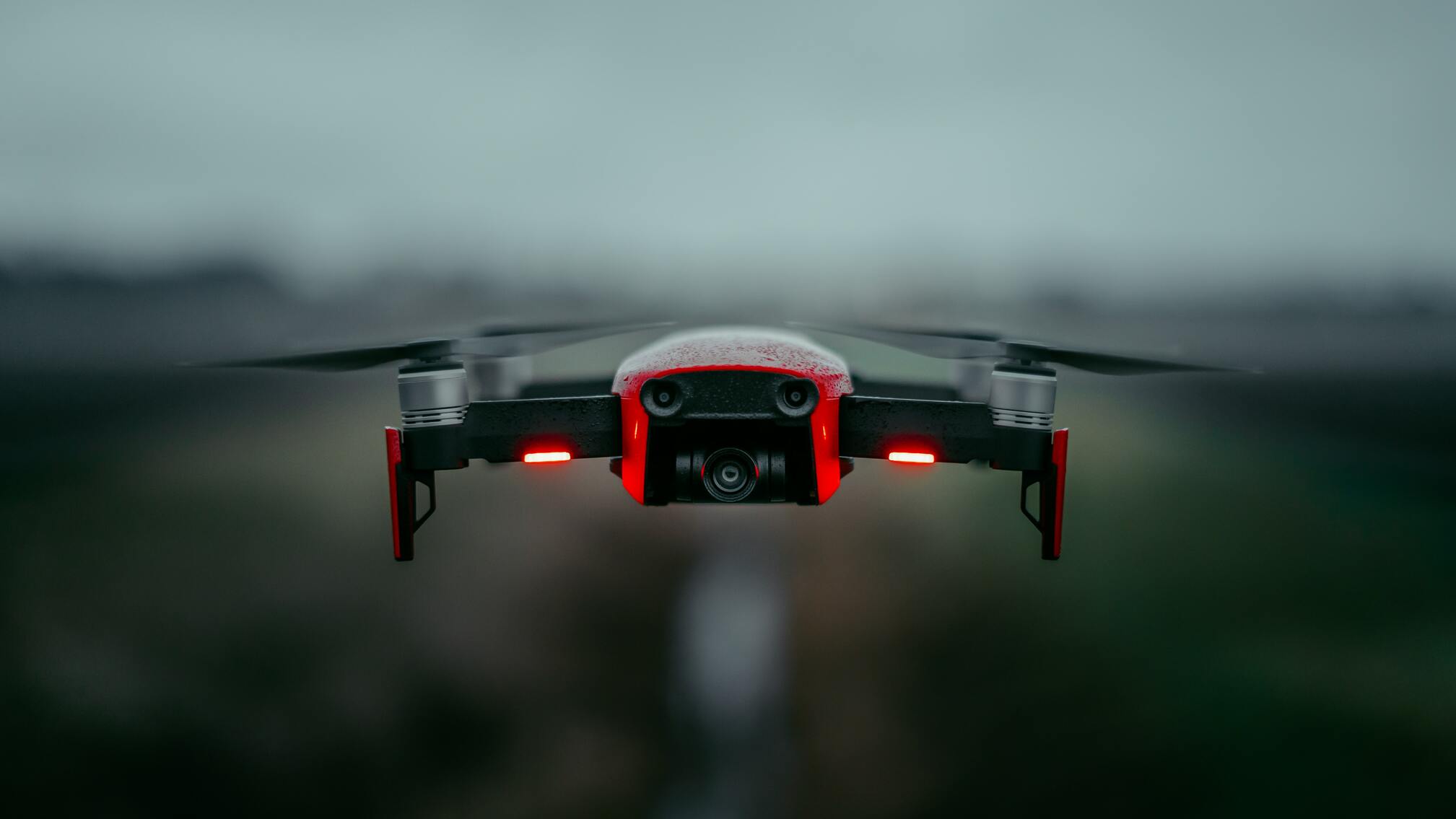
7. User-Friendly Experience: The micro is designed with ease of use in mind. It comes with a compact and ergonomic remote controller that provides intuitive control over the drone. micro drone ? The DJI Fly app, compatible with both iOS and Android devices, offers a user-friendly interface with access to intelligent flight modes, camera settings, and a live video feed from the drone's camera.
Considering these factors, the DJI micro drone offers excellent value for its price point. micro drone ? It combines portability, impressive image quality, intelligent flight modes, and safety features, making it an ideal choice for both beginners and experienced drone enthusiasts who want a compact yet capable drone for aerial photography and videography.

Do I Need A License To Fly A DJI Micro ?
The requirement for a license or registration to fly a DJI micro depends on the regulations of the country or region where you intend to fly. Here are some general guidelines:
1. United States: micro drone ? In the United States, if you are flying the DJI micro for recreational purposes, you are required to register it with the Federal Aviation Administration (FAA) before flying. The registration process involves providing your contact information and paying a small fee.
Once registered, you will receive a unique registration number that needs to be displayed on your drone. However, if you are flying the micro for commercial purposes, you are required to obtain a remote pilot certificate by passing the FAA's Part 107 knowledge test.
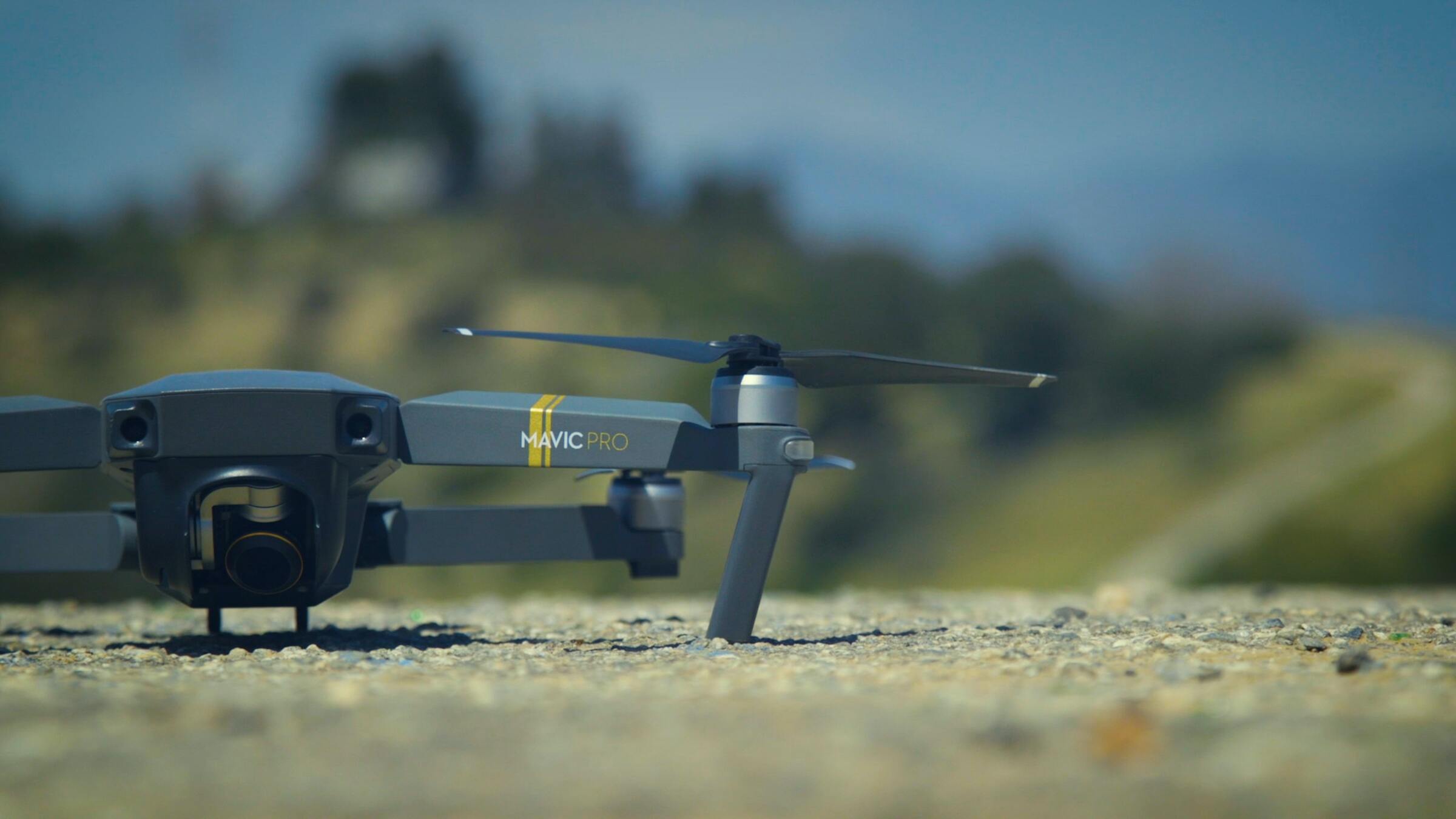
2. Canada: In Canada, if you are flying the DJI micro for recreational purposes, and it weighs between 250 grams and 25 kilograms, you are required to register it with Transport Canada and obtain a drone pilot certificate.
The certificate can be obtained by passing a basic online exam. If you plan to fly the micro for advanced operations or for commercial purposes, further certification and permissions may be required.
3. European Union: micro drone ? In the European Union, the regulations for flying drones are harmonized under the European Union Aviation Safety Agency (EASA). The exact requirements may vary between EU member states, but generally, if you are flying a DJI micro for recreational purposes, and it weighs less than 250 grams, no registration or license is typically required.
However, if the weight exceeds 250 grams or you plan to fly commercially, you may need to register your drone and obtain a drone pilot certificate, depending on the specific regulations of the country you are in.

4. Other Countries: Drone regulations vary from country to country, so it's important to check the specific regulations of the country or region where you plan to fly the DJI micro. Some countries may require registration or licensing, while others may have restrictions on where and how you can fly, especially in controlled airspace or near airports.
It's crucial to familiarize yourself with the local regulations and comply with them to ensure safe and legal drone operations. Always check the official aviation authority or regulatory body of your country or region for the most up-to-date and accurate information regarding licensing and registration requirements for drone operations.
Is Flying A DJI Micro Legal ?
Flying a DJI micro is generally legal, but it is subject to specific regulations and restrictions set by the aviation authorities of each country or region. Here are some important points to consider:

1. Compliance with Local Regulations: It is crucial to familiarize yourself with the drone regulations in your country or region before flying the DJI micro. These regulations typically cover aspects such as flight altitude limits, flight zones, registration requirements, pilot certification, and privacy considerations. Failure to comply with these regulations can result in fines or legal consequences.
2. Weight and Registration: The weight of the DJI micro falls below the threshold requiring registration or licensing in many countries. However, some jurisdictions may still require registration or identification of the drone, regardless of its weight. Always check the requirements of the specific country or region you are in to ensure compliance.

3. Flight Zones and Restrictions: Certain areas, such as airports, military bases, national parks, and densely populated areas, may have restrictions on drone flights. These restrictions are put in place to ensure the safety of airspace and people on the ground. Familiarize yourself with no-fly zones, restricted areas, and any specific permits required for flying in certain locations.
4. Privacy Considerations: When flying a drone, it is important to respect the privacy of others. Avoid flying over private property without permission and be mindful of capturing images or videos of individuals without their consent. Privacy laws may vary by country or region, so understanding the local privacy regulations is essential.
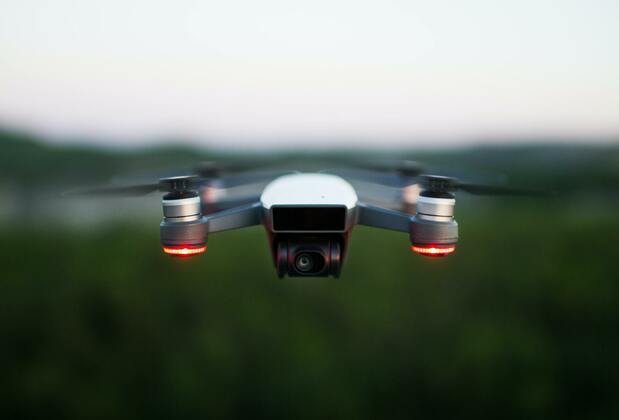
5. Commercial Use: If you plan to use the DJI micro for commercial purposes, such as aerial photography or videography for clients or businesses, additional regulations and certifications may apply. Commercial drone operations often require obtaining a remote pilot certificate or specific permits from the aviation authority in your country.
6. International Travel: If you plan to travel internationally with the DJI micro, it is essential to research and comply with the drone regulations of the destination country. Some countries may have more stringent requirements or even ban the use of drones altogether.

To ensure legal and responsible drone operations, it is recommended to stay informed about the regulations of your specific location and adhere to them. Check with the local aviation authority or regulatory body to obtain the most up-to-date information on drone regulations and requirements in your country or region.
Is The DJI Micro Legal In The US ?
Yes, the DJI micro is legal to fly in the United States, subject to compliance with the Federal Aviation Administration (FAA) regulations. Here are some key details regarding the legality of flying the DJI micro in the US:
1. Recreational Use: If you are flying the DJI micro for recreational purposes, you are required to register it with the FAA before operating it outdoors. This applies to drones weighing between 0.55 pounds (250 grams) and 55 pounds (25 kilograms). Registration involves providing your contact information and paying a small fee. Once registered, you will receive a unique registration number that needs to be displayed on your drone.

2. Operating Rules: The FAA has established specific operating rules for recreational drone pilots, which include the following:
a. Fly the drone within visual line of sight (VLOS) at all times. b. Do not fly over people, stadiums, or sporting events. c. Maintain a safe distance from other aircraft and avoid flying near airports or in controlled airspace without proper authorization. d. Do not fly at night unless the drone is equipped with appropriate lighting. e. Follow any additional local restrictions or regulations that may apply to your specific area of operation.
3. Height and Distance Limitations: Recreational drone pilots, including those flying the DJI micro, are advised to keep their drones below 400 feet above ground level (AGL) and maintain a distance of at least 5 miles away from airports or heliports, unless proper authorization is obtained.

4. Fly Responsibly: It is important to operate the DJI micro responsibly and with consideration for the safety and privacy of others. Respect people's privacy and avoid flying over private property without permission. Be mindful of your surroundings and ensure you are aware of any local or state laws that may impose additional restrictions.
It's worth noting that if you plan to use the DJI micro for commercial purposes, such as aerial photography or videography for clients or businesses, you would need to obtain a remote pilot certificate by passing the FAA's Part 107 knowledge test. This certification allows you to fly the drone commercially and requires adherence to additional regulations and operational requirements.
For the most up-to-date and detailed information on drone regulations in the United States, including any changes or updates, it is recommended to visit the FAA's official website or consult their guidelines specifically tailored to recreational drone use.

What Is The Disadvantage Of DJI Micro ?
While the DJI Micro offers many benefits and features, there are a few disadvantages to consider:
1. Limited Wind Resistance: Due to its small size and lightweight design, the DJI micro can be susceptible to wind gusts. In windy conditions, it may struggle to maintain stability and smooth footage, requiring the pilot to exercise caution and fly in more favorable weather conditions. It is recommended to avoid flying the drone in strong winds to prevent potential flight issues.
2. Lack of Obstacle Avoidance Sensors: Unlike some of DJI's higher-end drones, the micro does not have obstacle avoidance sensors on its sides or rear. It only has downward-facing sensors to assist with stable hovering and landing. This means that the drone may not detect obstacles in its flight path and relies on the pilot's vigilance to avoid collisions. Pilots must exercise caution and be mindful of their surroundings when flying the micro to prevent accidents or damage.

3. Limited Camera Specifications: While the micro camera is capable of capturing impressive images and videos, it has some limitations compared to higher-end drones. The camera's sensor size and aperture are smaller, which can result in reduced low-light performance and dynamic range compared to larger sensor cameras. Additionally, the micro lacks advanced features like adjustable aperture or mechanical shutter, which can limit the flexibility in certain shooting scenarios.
4. Absence of Object Tracking: The DJI micro does not have built-in object tracking capabilities, which means it cannot autonomously track and follow a subject while maintaining a consistent frame. This feature, available on some higher-end DJI drones, can be useful for capturing dynamic footage of moving subjects without requiring the pilot to control the drone's movements manually.

5. Limited Range of Accessories: The DJI micro, being a smaller and more compact drone, has a limited range of compatible accessories compared to DJI's larger models. While it does have some accessories available, such as spare batteries, propellers, and carrying cases, the selection is not as extensive as the accessories available for DJI's higher-end drones.
It's important to note that these disadvantages are relative to the micro price point and intended purpose as a compact and lightweight consumer drone. Despite these limitations, the DJI micro still offers a high-quality flying and imaging experience, making it a popular choice for hobbyists and drone enthusiasts.

Is DJI Micro Still Worth It In 2023 ?
The DJI micro is still worth considering in 2023 for several reasons. However, it's important to note that technology evolves rapidly, and there may be newer drone models available at the time you are referring to. Here are some points to consider:
1. Image and Video Quality: The DJI micro offers impressive image and video quality with its 12-megapixel camera and 3-axis gimbal stabilization. While there may be newer drone models with improved camera capabilities, the micro image quality is still competitive and suitable for capturing stunning aerial shots and videos.

2. Portability and Weight: The micro compact and lightweight design makes it highly portable and convenient to carry around. This is a significant advantage for those who prioritize portability and want a drone that is easy to transport for various outdoor activities.
3. Flight Performance: While newer drones may offer enhanced flight performance, the micro still provides a satisfying flying experience. With its maximum flight speed of 16 meters per second (m/s) and a maximum transmission distance of up to 10 kilometers, it offers a good balance of maneuverability and range for capturing aerial footage.

4. Intelligent Flight Modes: The micro incorporates intelligent flight modes, such as QuickShots, which allow you to capture cinematic shots effortlessly. While newer models may have additional or improved intelligent flight modes, the micro available modes are still useful and enjoyable for capturing creative footage.
5. Price and Value: One of the significant advantages of the DJI micro is its relatively affordable price point compared to higher-end drone models. If the micro continues to meet your needs and budget, it can still provide excellent value in 2023, especially considering its compact size, image quality, and flight performance.
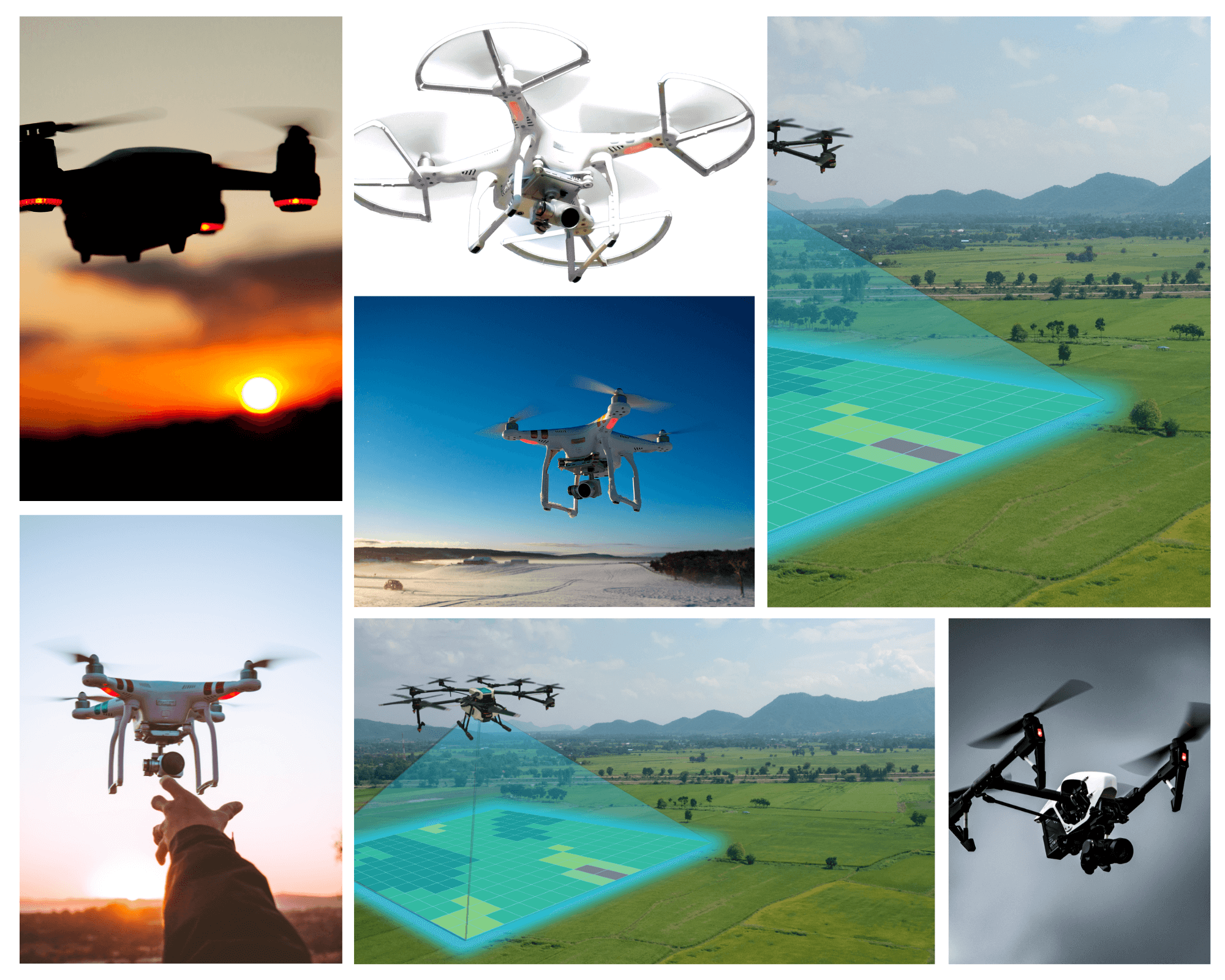
6. Community and Support: The DJI micro has gained a substantial user base since its release, and there is an active community of drone enthusiasts and resources available online. This community can provide support, tips, and advice on flying the micro, troubleshooting, and sharing creative ideas.
However, it is recommended to research and compare the specifications, features, and prices of other drone models available in 2023 to make an informed decision. DJI or other drone manufacturers may have released newer models with upgraded features and improved performance by that time. Keeping up with the latest technology trends and exploring the options available will help you determine the best drone for your specific needs and preferences.

Does The FAA Know When I Fly My Drone ?
The Federal Aviation Administration (FAA) in the United States does not have real-time tracking or monitoring capabilities for individual recreational drone flights. However, it's important to understand that the FAA has the authority to investigate and enforce drone regulations if violations are reported or observed.
Here are some key points regarding the FAA's knowledge of drone flights:
1. Drone Registration: The FAA requires recreational drone pilots to register their drones if they weigh between 0.55 pounds (250 grams) and 55 pounds (25 kilograms). During the registration process, you provide your contact information and receive a unique registration number. This registration number should be affixed to your drone. The FAA can access the registration database to retrieve the information associated with the registration number.

2. Remote Identification (Upcoming Rule): The FAA is in the process of implementing remote identification regulations, which will require drones to have a remote identification system that transmits certain identification information. This system will allow law enforcement, the FAA, and other authorized parties to identify and track drones in real-time. However, the specific details of this requirement and its implementation are not yet finalized as of my knowledge cutoff.
3. Investigation and Reporting: The FAA relies on reports from the public, law enforcement agencies, or other sources to become aware of potential violations of drone regulations. If there is reason to believe that a violation has occurred, the FAA may investigate and take appropriate action, which can include issuing warnings, fines, or legal enforcement.

4. Pilot Responsibility: As a recreational drone pilot, it is your responsibility to understand and comply with the FAA's regulations and guidelines. This includes adhering to operating rules, such as flying within visual line of sight, avoiding restricted areas, and respecting altitude and distance limits. The FAA expects drone pilots to exercise safe and responsible drone operations to ensure the safety of airspace and the public.
It's important to stay informed about the FAA's regulations, guidelines, and any updates or changes that may occur. Always check the FAA's official website for the most up-to-date information and resources related to drone operations in the United States.

How High Can You Legally Fly A DJI Micro ?
In the United States, the Federal Aviation Administration (FAA) has set certain limits for the maximum altitude at which you can legally fly a DJI micro or any other recreational drone. Here are the key details:
1. Maximum Altitude: According to the FAA's regulations, recreational drone pilots must keep their drones below 400 feet above ground level (AGL). This altitude restriction helps ensure the safety of manned aircraft operating in controlled airspace, as well as maintaining a reasonable separation from other structures and obstacles.
2. Waivers for Increased Altitude: In some cases, it is possible to obtain a waiver from the FAA to fly your drone above the 400-foot altitude limit. However, obtaining such a waiver typically requires a specific justification and adherence to additional safety measures. Waivers are generally granted for professional or commercial drone operations rather than recreational use.

3. Local Airspace Restrictions: It's important to note that in certain areas, such as near airports or in controlled airspace, there may be additional altitude restrictions that you must adhere to. Always check for Temporary Flight Restrictions (TFRs) or other airspace restrictions in your area before flying, as these may impose specific altitude limitations.
4. Safety Considerations: Even though the maximum legal altitude is 400 feet AGL, it is essential to prioritize safety and exercise caution while flying your DJI micro. It is generally recommended to maintain a safe distance from the ground and surrounding obstacles to ensure proper control of the drone. Be mindful of any local or state regulations that may impose further restrictions.
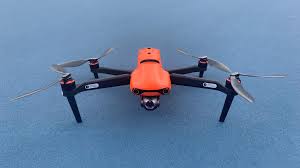
It's important to familiarize yourself with the FAA's regulations and guidelines to ensure legal and safe drone operations. Always check the FAA's official website for the most up-to-date information and any changes to the altitude restrictions for recreational drone use.
What Is The Largest Drone You Can Fly Without A License ?
The largest drone you can fly without a license depends on the country or region you are in, as regulations vary. However, I can provide some general guidelines:
1. United States: In the United States, if you are flying a drone for recreational purposes, you do not need a license regardless of the size of the drone. However, you are required to register your drone with the Federal Aviation Administration (FAA) if it weighs between 0.55 pounds (250 grams) and 55 pounds (25 kilograms). Drones weighing more than 55 pounds would require additional certifications and authorizations, including a remote pilot certificate.

2. European Union: In the European Union (EU), drone regulations are harmonized under the European Union Aviation Safety Agency (EASA). The specific weight limits for flying drones without a license vary between member states. However, in general, for recreational use, you can typically fly drones up to 25 kilograms (55 pounds) without requiring a license. Additional rules and restrictions may apply depending on the category and class of the drone.
3. Canada: In Canada, if you are flying a drone for recreational purposes, you do not need a license if the drone weighs less than 250 grams. However, if the drone weighs between 250 grams and 25 kilograms, you are required to register it with Transport Canada and obtain a drone pilot certificate by passing a basic online exam.

4. Other Countries: Drone regulations vary widely in different countries. Some countries have specific weight limits for flying drones without a license, while others may have different criteria, such as based on altitude or purpose of use. It is crucial to research and understand the drone regulations of the specific country or region where you intend to fly to ensure compliance.
It's important to note that while you may not need a license to fly drones under certain weight limits, there are still regulations and guidelines to follow for safe and responsible drone operations. It's always recommended to check the local aviation authority or regulatory body's official website for the most up-to-date and accurate information regarding drone regulations in your country or region.

Can I Fly My DJI Micro Out Of Sight ?
In the United States, the Federal Aviation Administration (FAA) requires recreational drone pilots to fly their drones within visual line of sight (VLOS) at all times. This means that you must be able to see your DJI micro with your own eyes during the entire duration of the flight without the use of binoculars or other visual aids.
Here are some key details regarding flying the DJI Micro within visual line of sight:
1. Definition of Visual Line of Sight (VLOS): VLOS refers to the ability to maintain unaided visual contact with your drone while it is in flight. You should be able to see and track the drone's movements in the sky without relying on technology, such as a live video feed or FPV (First Person View) goggles.

2. Maintaining Safety and Control: Flying within visual line of sight allows you to maintain situational awareness and effectively control your drone, ensuring the safety of the flight and the people and property around you. It enables you to detect and respond to potential obstacles or hazards in real-time.
3. Exceptions: The FAA currently does not provide any specific exceptions for flying drones beyond visual line of sight for recreational purposes. However, there are separate regulations and procedures for obtaining waivers or authorizations to fly beyond visual line of sight for specific commercial or research purposes.
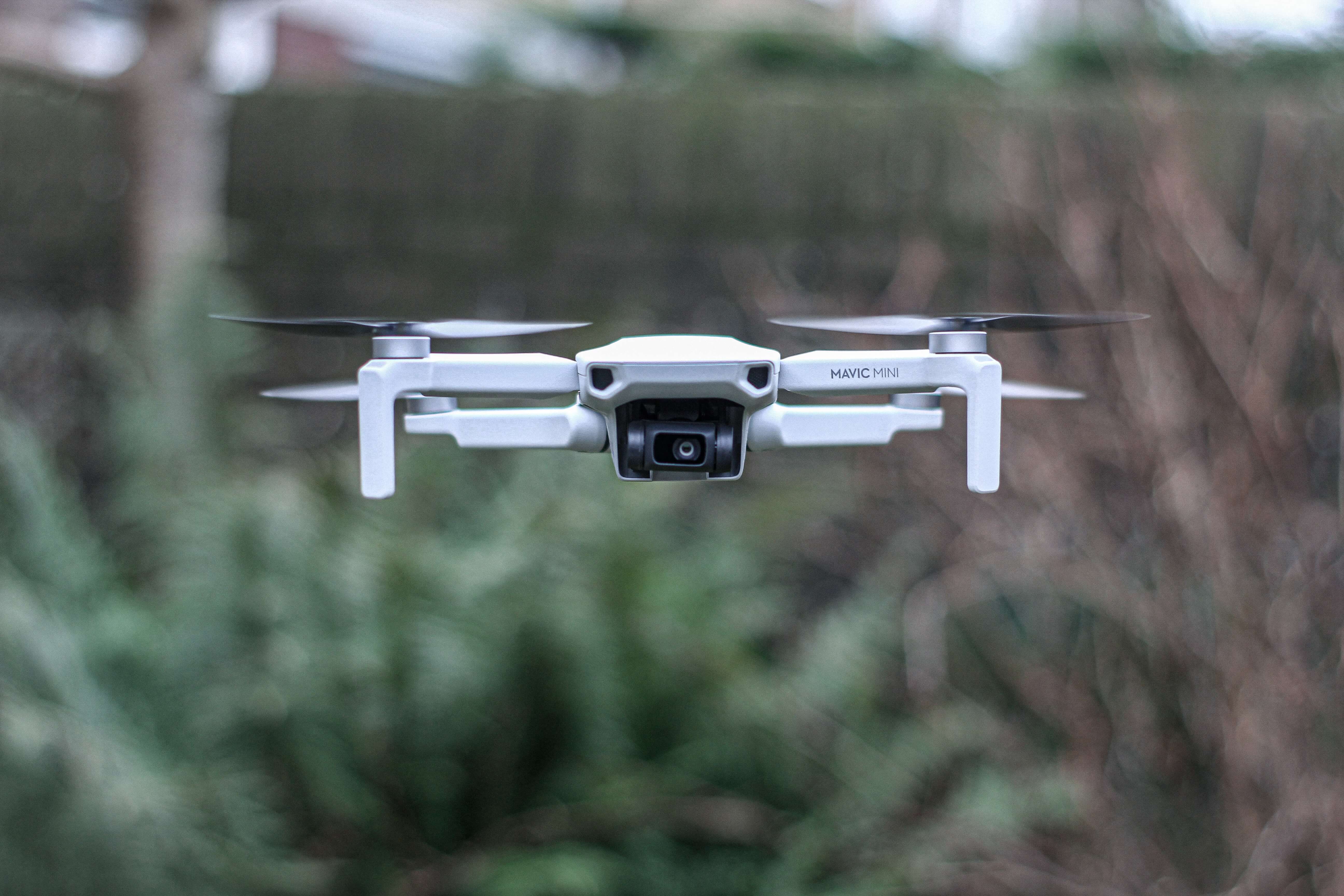
4. Visual Observers: It is worth mentioning that the FAA allows the use of visual observers to assist the pilot in maintaining visual line of sight. Visual observers are additional individuals who help monitor the drone's flight and provide information to the pilot to ensure compliance with safety regulations.
Flying your DJI micro out of sight violates FAA regulations and can result in potential penalties or legal consequences. It is important to follow the guidelines set by the FAA and maintain visual line of sight to ensure safe and responsible drone operations.
What License Do I Need For A DJI Micro ?
In the United States, if you are flying a DJI micro for recreational purposes, you do not need a license. However, there are certain requirements and guidelines to follow. Here are the key details regarding the license requirements for flying a DJI micro:
1. Recreational Use: For recreational drone operations, the FAA requires you to register your DJI micro if it weighs between 0.55 pounds (250 grams) and 55 pounds (25 kilograms). The registration process involves providing your contact information and paying a small fee. Once registered, you will receive a unique registration number that needs to be displayed on your drone.
2. Knowledge and Compliance: While you do not need a license, it is important to have knowledge of the FAA's regulations and guidelines for recreational drone pilots. You are expected to follow the operating rules, such as flying within visual line of sight, avoiding restricted areas, and maintaining a safe distance from people and property.
3. Remote Pilot Certificate (Commercial Use): If you plan to use the DJI micro for commercial purposes, such as aerial photography or videography for clients or businesses, you will need a remote pilot certificate. To obtain a remote pilot certificate, you are required to pass the FAA's Part 107 knowledge test, which covers topics such as airspace regulations, weather conditions, and flight safety.
4. Part 107 Regulations: If you hold a remote pilot certificate, you must adhere to the regulations outlined in Part 107 of the FAA's rules. These regulations cover various aspects, including operating restrictions, airspace requirements, and reporting procedures.
It's important to note that drone regulations and requirements may change over time. Therefore, it is recommended to regularly check the FAA's official website or consult with the FAA for the most up-to-date and accurate information regarding licensing and registration requirements for recreational and commercial drone operations.
Additionally, if you plan to fly the DJI micro in a country other than the United States, it is important to research and comply with the specific licensing and registration requirements of that country or region.
Can You Land DJI Micro On Your Hand ?
Yes, it is possible to hand-land the DJI micro. Hand landing can be a convenient and controlled method of safely bringing the drone down, especially in situations where there might be limited landing space or uneven terrain. Here are some points to consider when hand-landing the DJI micro:
1. Safety Precautions: Before attempting a hand landing, ensure that the propellers have come to a complete stop. This can be done by either manually powering off the motors or using the remote controller's dedicated "Motor Stop" button. Always exercise caution and be aware of the spinning propellers to avoid any accidental contact and potential injuries.
2. Hand Positioning: When hand landing the DJI micro, it is recommended to position your hand from below, with your palm facing upward and your fingers gently cupped. Make sure your fingers are away from the propellers to prevent any accidental contact.
3. Landing Approach: When bringing the DJI micro down for a hand landing, descend it slowly and steadily, keeping control of the drone using the remote controller. Maintain a steady and smooth descent, aligning the drone with your hand to allow for a stable landing.
4. Grabbing the Drone: Once the DJI micro is low enough, carefully and gently grab the landing gear or the body of the drone, making sure to avoid touching the propellers. Ensure a firm grip while still maintaining a gentle touch to avoid damaging the drone or interfering with its sensors.
5. Powering Off the Drone: After hand-landing the DJI micro, you can safely power off the drone by pressing and holding the power button until the indicators turn off. This ensures the motors are completely deactivated.
Hand landing the DJI micro requires careful coordination and awareness to avoid any accidents or damage. It is recommended to practice in a controlled environment before attempting it in more challenging conditions. Always prioritize safety and take necessary precautions to protect yourself and the drone during the hand-landing process.
Is The DJI Micro Waterproof ?
No, the DJI micro is not waterproof. It is important to note that the micro is not designed to withstand water exposure or operate in wet conditions. The drone's electronic components, including the camera, motors, and battery, are not waterproof and can be damaged if exposed to water.
While the micro has some level of weather resistance and can handle light rain or moisture to a certain extent, it is not recommended to intentionally fly the drone in wet conditions or expose it to water. Water can damage the internal electronics, compromise the drone's stability and flight performance, and potentially lead to a complete malfunction.
If the micro comes into contact with water, it is essential to dry it thoroughly before attempting to power it on or use it again. Remove the battery, wipe down the drone's exterior with a dry cloth, and allow it to air dry completely. It is crucial to ensure that there is no moisture remaining before using the drone to prevent any potential damage.
To protect the DJI micro from water damage, it is advisable to check the weather forecast and avoid flying in rainy or wet conditions. If you need to capture footage in areas with water, such as near bodies of water or during inclement weather, it is recommended to use additional waterproof accessories or protective measures to safeguard the drone and its components.
Overall, while the DJI micro is a durable and reliable drone, it is not waterproof, and precautions should be taken to avoid water exposure during its operation.
Will DJI Micro Work Without Internet ?
Yes, the DJI micro can work without an internet connection. The drone itself does not require an internet connection to fly, control its basic functions, or capture photos and videos. Here are some key points regarding the DJI micro and internet connectivity:
1. Flight Control: The DJI micro is primarily controlled using the included remote controller, which communicates directly with the drone via a wireless connection. The remote controller does not rely on internet connectivity to communicate with the drone or execute flight commands. The flight control functions are performed locally between the remote controller and the drone.
2. Camera Operation: The DJI micro camera functions, such as capturing photos and videos, adjusting camera settings, and activating various shooting modes, are all controlled locally through the remote controller or the DJI Fly app. These operations do not require an internet connection.
3. Offline Flight Planning: The DJI Fly app, used for flight planning, accessing advanced flight modes, and reviewing captured media, can be used offline. You can plan your flights, set waypoints, and access previously downloaded maps without an internet connection. However, if you want to download maps or access additional features that require an internet connection, you will need to connect to the internet prior to using the app.
4. Firmware Updates: While the DJI micro can be operated without an internet connection, it is recommended to periodically connect the drone and the remote controller to the internet to check for and install firmware updates. Firmware updates often include important performance enhancements, bug fixes, and new features that improve the overall experience and functionality of the drone.
It's important to note that while the DJI micro can function without an internet connection, there are certain features and functionalities that may require internet access. These can include features like map updates, firmware updates, accessing online tutorials or resources, and syncing flight logs or media to the DJI cloud services.
Having an internet connection can also enhance the overall experience by enabling the ability to download maps, access up-to-date information, and potentially access additional features or services provided by DJI or third-party applications.
What Happens When DJI Micro Goes Out Of Range ?
When the DJI micro goes out of range, several things can happen depending on the circumstances and the settings configured in the drone and the remote controller. Here are the key points to consider:
1. Connection Lost: If the DJI micro moves beyond the maximum transmission distance or encounters interference that disrupts the signal, the connection between the drone and the remote controller can be lost. When this happens, the remote controller will typically emit an audible warning and display a message indicating the loss of connection.
2. Return-to-Home (RTH) Activation: If the drone loses connection with the remote controller, the DJI micro is equipped with a Return-to-Home (RTH) feature that activates automatically. RTH instructs the drone to navigate back to its recorded home point or takeoff location using its built-in GPS capabilities.
3. RTH Behavior: Upon activating the RTH feature, the DJI micro ascends to a predetermined altitude to clear any obstacles in its path. It then flies back along its recorded flight path or takes a direct route to its home point, depending on the selected RTH mode and available GPS signal.
4. Reconnection: If the remote controller and the drone come back within range and establish a stable connection, the RTH sequence may be canceled, and manual control can be regained. At this point, the pilot can resume piloting the drone manually.
5. Landing: Once the DJI micro returns to its home point or the recorded takeoff location, it will initiate an automatic landing procedure. The drone will descend to the ground and gently touch down, completing the landing process.
It is important to note that the Return-to-Home (RTH) feature is not foolproof and can be affected by various factors, such as the availability of GPS signals, surrounding obstacles, and environmental conditions. Pilots should always monitor the drone's flight status and surroundings even when RTH is activated to ensure a safe landing.
To minimize the chances of losing connection or encountering issues when flying the DJI micro, it is recommended to adhere to the manufacturer's guidelines, maintain line of sight with the drone, avoid flying in areas with heavy interference, and regularly update the firmware to ensure optimal performance.
What Is The Lifespan Of A DJI Drone ?
The lifespan of a DJI drone can vary depending on several factors, including the specific model, frequency of use, maintenance, and how well it is taken care of. While there is no fixed lifespan for DJI drones, here are some points to consider regarding the longevity of DJI drones:
1. Build Quality and Materials: DJI drones are generally built with high-quality materials and undergo rigorous testing during the manufacturing process. The durability of the drone's construction, including the frame, motors, and other components, can contribute to a longer lifespan.
2. Flight Hours: DJI drones, like any electronic device, have a finite number of flight hours they can endure before certain components may begin to wear out. However, DJI drones are designed to withstand hundreds of flight hours when properly maintained. It's important to note that aggressive flying or crashes can potentially reduce the lifespan of the drone.
3. Battery Lifespan: The lifespan of a drone's battery is a critical factor. DJI drone batteries typically have a certain number of charge cycles before their performance and capacity start to degrade. It is essential to follow proper battery care and maintenance guidelines, such as avoiding overcharging, storing the batteries correctly, and not exposing them to extreme temperatures, to maximize their lifespan.
4. Software Updates: DJI regularly releases firmware updates for their drones, which can bring new features, bug fixes, and improvements to the overall performance and stability of the drone. Keeping the firmware updated ensures that the drone operates optimally and can help extend its lifespan.
5. Maintenance and Care: Proper maintenance and care can significantly impact the lifespan of a DJI drone. Regularly inspecting the drone for any damage, cleaning it, and ensuring all moving parts are functioning properly can help prevent issues and extend the drone's lifespan. Following the manufacturer's guidelines for maintenance and care is crucial.
It's important to note that even with proper care and maintenance, certain components of a DJI drone may require eventual replacement due to wear and tear. Components such as propellers, motors, and camera gimbals may need to be replaced over time, depending on usage and environmental conditions.
Overall, the lifespan of a DJI drone can vary, but with proper care, maintenance, and adherence to manufacturer guidelines, DJI drones can last for several years and provide many hours of enjoyable flying and capturing aerial footage.
What Is The Best Drone Without FAA Registration ?
The FAA registration requirement applies to drones weighing between 0.55 pounds (250 grams) and 55 pounds (25 kilograms) in the United States. However, regulations and requirements may change over time, so it's important to check the current regulations and guidelines set by the FAA or your local aviation authority.
That being said, there are several drones available that fall below the weight threshold requiring FAA registration. Here are some popular options:
1. DJI Micro: The DJI micro weighs just 249 grams, making it eligible for flight without FAA registration in the United States. It offers a compact and lightweight design, excellent camera quality, and advanced features such as 4K video recording and intelligent flight modes.
2. Autel EVO Lite: The Autel EVO Lite is another lightweight drone that does not require FAA registration. It weighs around 249 grams and offers 4K video recording, intelligent flight modes, and a range of up to 4.3 miles (7 kilometers).
3. Hubsan Zino Mini Pro: The Hubsan Zino Mini Pro is a compact and foldable drone that weighs less than 250 grams. It features a 4K camera, intelligent flight modes, and a range of up to 4 kilometers.
4. Parrot Anafi: The Parrot Anafi is a lightweight and portable drone weighing around 320 grams. While it exceeds the 250-gram threshold for FAA registration exemption, it is still relatively light and offers 4K video recording, a 21-megapixel camera, and a foldable design.
Remember, it's important to check the regulations and registration requirements of your specific country or region, as they may have different weight limits or exemptions. Additionally, always follow local laws and regulations regarding drone flight, regardless of whether registration is required or not, to ensure safe and responsible drone operations.
Is The DJI Micro Good At Night ?
The DJI micro is capable of capturing footage and photos in low-light or night conditions, but its performance may be limited compared to larger drones or those specifically designed for low-light photography. Here are some key points to consider regarding the DJI micro performance at night:
1. Sensor and Aperture: The DJI micro features a 1/2.3-inch CMOS sensor and a fixed f/2.8 aperture. While these specifications are sufficient for daytime photography and videography, they may not perform as well in low-light conditions compared to drones with larger sensors or wider apertures. The smaller sensor size and fixed aperture limit the amount of light that can be captured, resulting in potentially higher noise levels and reduced dynamic range in low-light situations.
2. Image Quality: In well-lit night scenes or when shooting with ample artificial lighting, the DJI micro can still produce reasonably good image quality. However, as light levels decrease, the image quality may deteriorate, and noise may become more noticeable in darker areas of the image. It's important to manage expectations and understand that the micro low-light performance may not match that of higher-end or specialized low-light cameras.
3. Intelligent Flight Modes: The DJI micro offers certain intelligent flight modes, such as QuickShots and Dronie, that can be used at night. However, it's important to note that these modes rely on the drone's sensors and algorithms to track and capture the subject, and they may be less accurate or reliable in low-light conditions.
4. Manual Settings: To optimize the DJI micro performance in low-light situations, you can adjust the camera settings manually. For example, you can lower the shutter speed to allow more light into the sensor, but this may result in increased motion blur if the drone or subject is moving. Additionally, increasing the ISO sensitivity can help brighten the image, but it may introduce more noise.
5. Lighting Considerations: When flying the DJI micro at night, it's important to consider the available lighting conditions. Streetlights, building lights, or other sources of artificial illumination can help enhance the visibility and quality of the footage. Experimenting with different lighting scenarios and compositions can lead to more creative and visually appealing night shots.
It's worth noting that the DJI micro primary strength lies in its compact size, ease of use, and affordability, rather than specialized low-light performance. For professional-grade night photography or videography, higher-end drones or dedicated low-light cameras may be more suitable. However, with proper technique, creativity, and an understanding of its limitations, the DJI micro can still capture decent footage and photos in low-light conditions.
Can An Airport See My Drone ?
Airports have various systems and technologies in place to monitor the airspace around them, including the ability to detect and track aircraft. While airports may have some monitoring capabilities, they generally do not have direct visibility or detection systems specifically designed to identify every drone in the vicinity. Here are some key points to consider:
1. Air Traffic Control (ATC): Airports have air traffic control facilities that monitor and manage aircraft movements in their airspace. ATC is primarily concerned with manned aircraft operations and focuses on maintaining safe separation and efficient flow of air traffic. They have radar systems and communication channels to coordinate with pilots.
2. Airport Surveillance Radar (ASR): Airports typically have surveillance radars that detect and track larger aircraft within their airspace. These radars are designed to detect aircraft with transponders that actively transmit their identification and position information. However, drones, especially smaller ones like the DJI micro, may not have transponders and are not actively tracked by these systems.
3. Pilot Reporting: Pilots of manned aircraft are trained to report any sightings of drones near airports or in restricted airspace to air traffic control. This information is crucial for the airport authorities to assess potential risks and take appropriate actions.
4. Drone Detection Systems: Some airports may deploy specialized drone detection systems to identify and locate unauthorized drones operating near their airspace. These systems utilize technologies such as radar, radio frequency (RF) scanning, or visual detection methods to detect drones. However, these systems are not present at all airports and may not have complete coverage.
5. Reporting and Investigation: If there are reports or indications of unauthorized drone activity near an airport, airport authorities or law enforcement agencies may investigate and take appropriate action based on the information available. This can include notifying the FAA or local authorities to mitigate any potential safety risks.
It's important to note that flying drones near airports is generally prohibited and can pose significant safety risks to manned aircraft. The FAA and local aviation authorities enforce regulations and restrictions to ensure the safety of airspace around airports. It is crucial to understand and comply with these regulations, maintain a safe distance from airports, and avoid flying in restricted airspace to prevent any potential incidents or legal consequences.
Can The DJI Micro Fly Over 400 Feet ?
No, the DJI micro is designed with built-in altitude limits that prevent it from flying above 400 feet (122 meters) above ground level (AGL). This altitude restriction is in accordance with the Federal Aviation Administration (FAA) regulations for recreational drone operations in the United States.
The altitude limit serves to ensure the safety of manned aircraft in controlled airspace and helps prevent potential conflicts or collisions between drones and other aircraft. The DJI micro uses its internal barometric pressure sensor to measure its altitude relative to the ground and will automatically enforce the altitude limit during flight.
It's important to note that attempting to override or bypass the altitude limit is not recommended and may violate local regulations. Pilots should always comply with the FAA's regulations and guidelines to ensure safe and responsible drone operations.
It's worth mentioning that other countries may have different altitude restrictions for recreational drone flights. Therefore, it is essential to check the specific regulations and guidelines of your country or region before flying the DJI micro to ensure compliance with local laws.
Does The DJI Micro Have Obstacle Avoidance
No, the DJI micro does not have obstacle avoidance sensors on its sides or rear. Unlike some of DJI's higher-end drones, such as the Mavic Air 2 or Mavic 2 Pro, the micro does not incorporate obstacle avoidance technology.
The DJI micro is equipped with downward-facing sensors that assist with precise hovering and landing, but they are not designed to detect and avoid obstacles in front or on the sides of the drone. This means that the micro relies heavily on the pilot's situational awareness and manual control to avoid obstacles during flight.
It's important to exercise caution and fly the DJI micro in areas with ample space and minimal obstacles to minimize the risk of collisions. Pilots should always maintain visual line of sight with the drone, be aware of their surroundings, and fly in a responsible and safe manner to prevent accidents or damage.
It's worth noting that obstacle avoidance technology is available on some higher-end DJI drones, which use a combination of sensors, cameras, and artificial intelligence algorithms to detect and avoid obstacles. If obstacle avoidance is a crucial feature for your intended use, you may consider other models within the DJI lineup that offer this functionality.
Click here for more information DJI